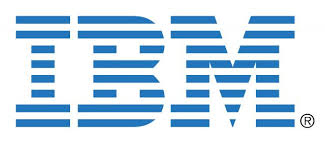Tech for Good - Fight Human Trafficking Using Technology
By Neeraj Kaushik | Cloud and AI Solutions Leader - IBM Corporate Social Responsibility

Originally published on LinkedIn
Now and again I'm reminded that the tech projects I work on are used by real people addressing important social issues. Lately, I've been allowed to work as a Cloud and AI Solutions Architect on an interesting project that uses tech to fight human trafficking.
Human trafficking is a massive, $150 billion illegal global industry — more profitable than drugs or white-collar crime. It exploits more than 40 million people worldwide, according to the International Labor Organization.
Victims cut across the lines of gender, age, and industry — children and adults; men, women, and trans people all harbored within sectors of agriculture, prostitution, hospitality, and manufacturing.
About 50,000 people are trafficked into the United States each year, most often from Mexico and the Philippines, according to a 2019 report by the U.S. Department of Health & Human Services. More alarming, the average age of a teen trafficked into the sex trade in the U.S. is 12 to 14 years old.
Stakeholders from multiple sectors including Non-Government Organizations, Law Enforcement, Federal Agencies, and Financial Institutions; capture human trafficking domain-specific data from various sources and maintain their own isolated data stores often limited to geographical boundaries and\or areas of expertise within which they operate.
Since each organization tends to maintain its gold standards for collecting & curating data, they often classify the data according to the classifications that are important to their unique requirements often using an organization-specific set of defined terminologies.
Because trafficking activity transcends borders and industries, it requires substantial coordination to address. To that end, the TA Hub allows authorized members to collect, securely share, and analyze data in the cloud. There, non-personal data related to human trafficking is uploaded and transformed into actionable insight. Initial TA Hub participants include Barclays, Europol, Liberty Shared, Love Justice International, and Western Union.
TA Hub, which runs on the IBM Cloud, was developed on a pro bono basis and features technology donated by IBM. The system enables authorized organizations, such as financial service companies, NGOs, and law enforcement agencies, to collaborate systematically, continuously. They can now securely share and analyze data to connect seemingly unrelated clues that confirm and pinpoint suspected criminal activity. Organizations that have signed on to the Traffik Analysis Hub can potentially gain insights and context they may not have been able to easily obtain on their own.
TA hub curates the data from Watson Discovery News, GDELT Exploitation Data, RSS feed, and data from various partner organizations to build a map-based visual representation.
Leveraging AI techniques such as natural language classification, named entity recognition, natural language understanding, natural language translation, and anomaly detection the solution extracts key human trafficking information like the methods used to recruit, transport and control victims of human trafficking along with significant location attributes to help analysts identify patterns, hotspots, and routes followed by traffickers.
This technology-based approach helps NGOs to educate communities at risk, to prevent recruitment of victims and to rescue & reintegrate survivors; it helps law enforcement agencies, to pursue perpetrators; it supports policymakers in formulating smarter regulations; it provides financial institutions with information to identify and freeze criminally obtained proceeds, and it assists businesses in ensuring supply chains are free from exploitation.
In September 2019, at the European Data Science Awards, the Traffik Analysis Hub project won for the category "Innovative Use of AI for Social Impact."
Designing the architecture of Traffik Analysis Hub had its challenges which include: Cost, Scalability, GDPR Regulations, Security and Monitoring, and Model Training.
All the Natural Language Processing Models or Machine learning models are built for the human trafficking domain and like every other machine learning project, we need a large amount of training data.
IBM Cloud offerings like IBM Natural Language Understanding, Watson Discovery, IBM Watson Studio, IBM Knowledge Studio, Natural Language Classifier, Virtual Private Cloud Offering, and Kubernetes have made it possible to design and deliver the solution, but technology can only take it so far.
This is our chance to be part of history and finally, put an end to human trafficking. Join us in the fight to prevent human trafficking because we are at a time in history where working together on a global level is not just possible, it’s imperative. To see how you can get involved and to request a demonstration of the Traffik Analysis Hub, please visit http://www.traffikanalysis.org/.
Those folks and programmers, students and all interested parties should also check out whether the datajam is of interest by going to https://www.ibm.com/events/co/en/datajam/
Special thanks to:
Guille Miranda (Vice President & Global Head, Corporate Social Responsibility) - Sponsor
Leon Wasson (Director & CTO - Corporate Citizenship - CSR)
Ari Fishkind (Public Affairs Manager, Corporate Citizenship – CSR)
Martin Laird (Senior Program Manager, Corporate Citizenship)
John McGrath (Chief Solution Architect)
Krzysztof Szlejter (Development Lead/Architect)

